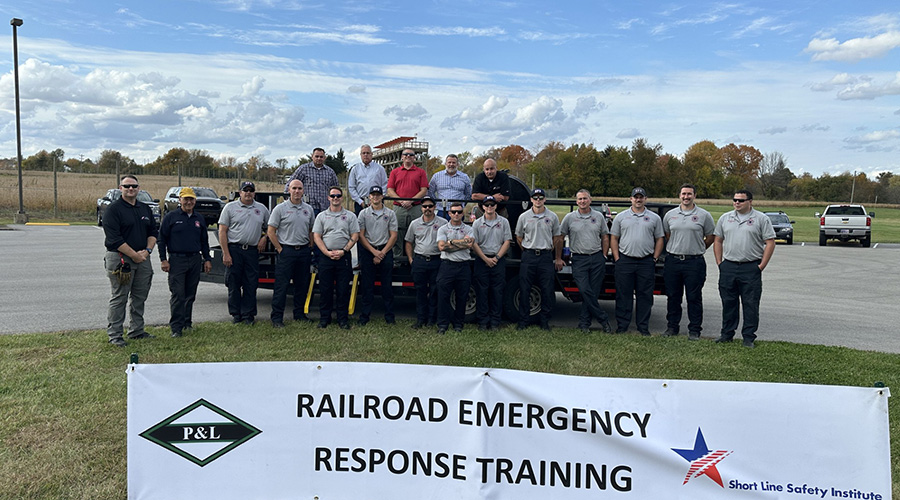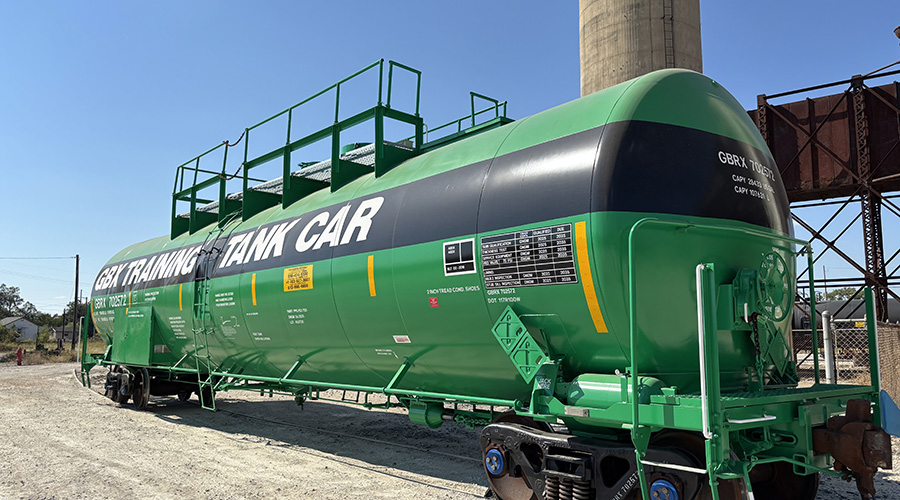On the right track: P&L Transportation CEO Greene takes safety to heart
7/12/2024
By Julie Sneider, Senior Editor
When Tom Greene joined the Paducah & Louisville Railway (P&L) in 1995 as vice president and chief financial officer, the Kentucky regional had no safety director or safety department.
“I won’t get into the details, but at the time we really didn’t treat safety like we should have,” says Greene. “Lip service was all it was.”
Since then, Greene has ascended the ranks to become chairman, president and CEO of P&L Transportation Inc., which now owns the P&L as well as the Appalachian and Ohio Railway (A&O), Evansville Western Railway and Midway Southern Railway.
The P&L’s safety culture has evolved considerably over the past three decades, with Greene now whole-heartedly riding — and helping to guide — the safety bandwagon.
In 2018, he helped bring in the Short Line Safety Institute (SLSI) to conduct a safety assessment of the P&L’s safety programs. A longtime friend and former CSX railroader Thomas Murta — who took over as the SLSI’s executive director in 2017 — had brought the institute’s programs to Greene’s attention.
By 2018, P&L had safety programs in place, but Greene believed they were becoming “stagnant,” he says. He wanted to know how to push the regional’s safety initiatives to the next level.
“We had tried a number of things, such as safety committees. But the program had gotten stale,” Green says.
So, in came the SLSI team for a voluntary, no-cost audit of the P&L’s and Evansville Western’s safety programs.
Ten steps to a safer railroad
The institute’s safety culture assessment process involves a team of SLSI professionals who visit a railroad to conduct an employee survey, perform onsite employee interviews, review safety documents and observe operations in the field.
When completed, the SLSI team presents the railroad’s management with an in-depth evaluation of how the railroad measures up to “10 Core Elements of a Strong Safety Culture,” including if leadership is committed to safety; continuous learning is practiced; reporting systems and accountability are clearly defined; training and resources are available; and the railroad consistently responds to safety concerns.
To date, SLSI has completed 150 safety culture assessments since it began offering them as a resource to U.S. short lines.
 The railroad and Short Line Safety Institute held a hazmat training session for emergency responders in Princeton, Kentucky. Paducah & Louisville Railway
The railroad and Short Line Safety Institute held a hazmat training session for emergency responders in Princeton, Kentucky. Paducah & Louisville RailwayWhen the institute completed its first round of assessments at the P&L and Evansville Western Railway in 2018, the results were overwhelming in terms of the number of areas needing improvement, Greene says. So much so, figuring out how to categorize and tackle the issues was a challenge, he adds.
“Safety committees was one area that we had to address,” says Greene. “We had established safety committees, but they would kind of run their course because we weren’t very good at it.”
After implementing new and augmenting existing safety practices at the P&L and Evansville Western over the past several years, the railroads this year completed a third round of SLSI safety audits to measure their progress and identify ongoing shortcomings. Additionally, plans are underway for the A&O to undergo its second SLSI safety audit.
Lessons learned
Among the lessons learned is how to best communicate the safety message so that it becomes ingrained in the workforce. For example, one reason the P&L’s safety committees grew stagnant early on was because the meetings were run by management, so the goal now is to have employees run the committees to take ownership of the safety culture, Greene says.
Other actions underway include stepping up communication of safety messages throughout the company’s 350-member workforce; regularly recognizing employees who achieve injury-free milestones; boosting training programs for train operators and other new hires; assigning mentors to less experienced conductors; identifying and developing new leadership within the ranks; increasing the reporting (including self-reporting) of safety incidents, lapses and mishaps; and strengthening ties with local emergency response agencies and customers that ship hazardous materials.
Greene believes the company is making headway. According to the most recent SLSI employee survey taken at P&L, 85% of respondents indicated they’ve seen a change in the safety culture from the previous survey, and 80% said the changes have been positive. Additionally, there’s been a 60% improvement in the company’s derailment frequency since 2018.
While the SLSI assessments and resources have helped P&L boost its safety record, the February 2023 Norfolk Southern Railway train derailment in East Palestine, Ohio, has significantly raised awareness of hazmat safety among the company’s railroaders, Greene says.
The thought of a major train derailment — especially one involving hazardous materials — keeps him up at night, he says.
“In 2012, we had a pretty significant one on the P&L, where we had to evacuate 12 to 15 homes and a highway near Louisville was shut down,” says Greene. “We dealt with all the hazardous materials on the ground, and many folks came in to help us. We observed what happened with the Norfolk Southern derailment in East Palestine, how things were handled and how they might have been handled differently.”
The East Palestine accident prompted P&L officials to immediately dust off their railroads’ emergency response plans and make sure everything is up to speed. Moreover, the P&L organized and held hazmat training sessions between railroaders and emergency response teams.
“I’m not saying we wouldn't have done those things had it not been for East Palestine, but they certainly took on some new importance,” Greene says.
Another takeaway from East Palestine: knowing how to communicate with the public when a rail disaster occurs. To be better prepared, Greene recently attended an American Short Line and Regional Railroad Association presentation on public relations for the railroad executive. Greene was so impressed with the session’s presenter, he’s now corresponding with him to gain additional advice.
“One of the things that we need to be better prepared for is, in the event that we ever have to go out in front of the public, we need to know what to say and how to say it,” Greene says.
Effective public relations in the aftermath of a train disaster are skills that Greene hopes he won’t need anytime soon. But he understands that safe railroading is an ongoing process.
“It’s a journey, not a destination,” he says.

